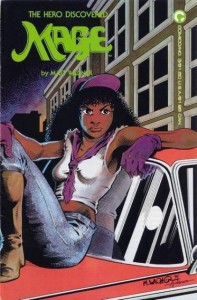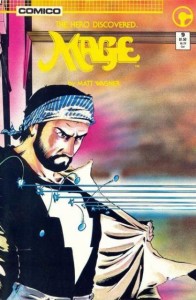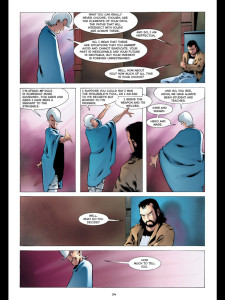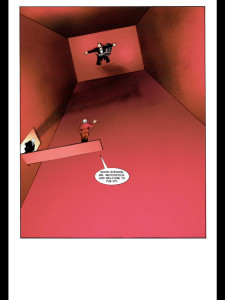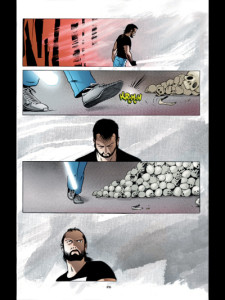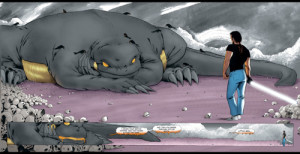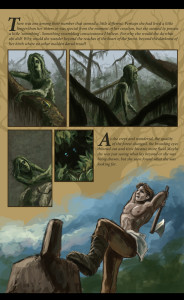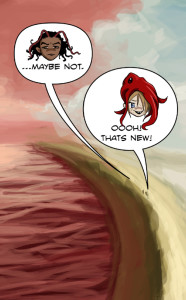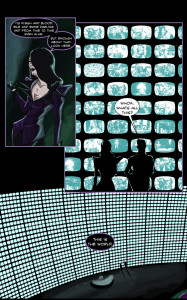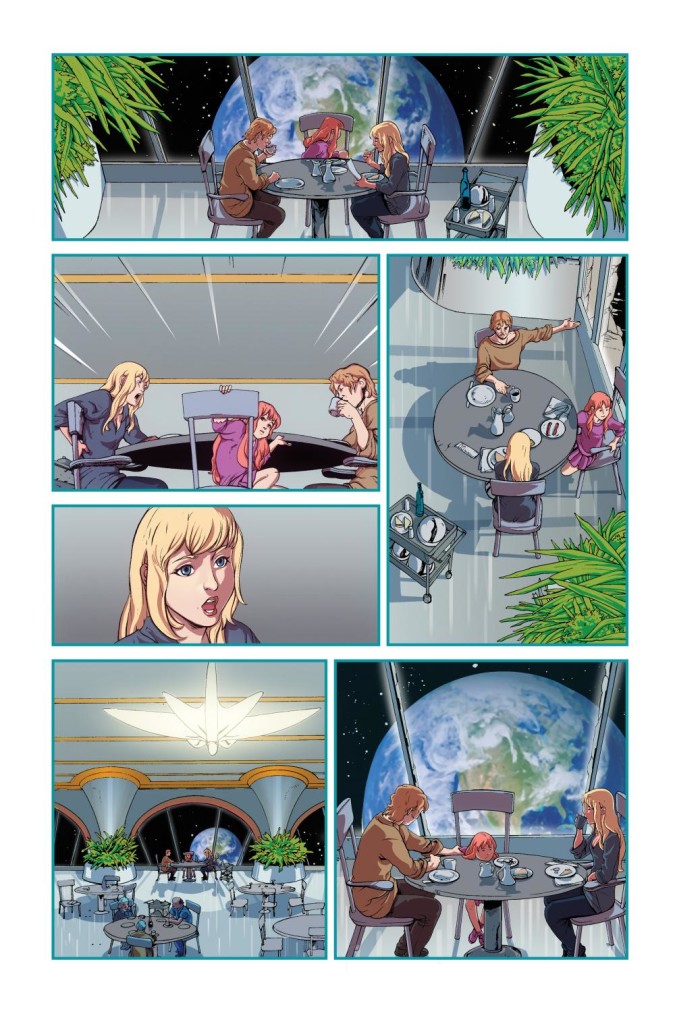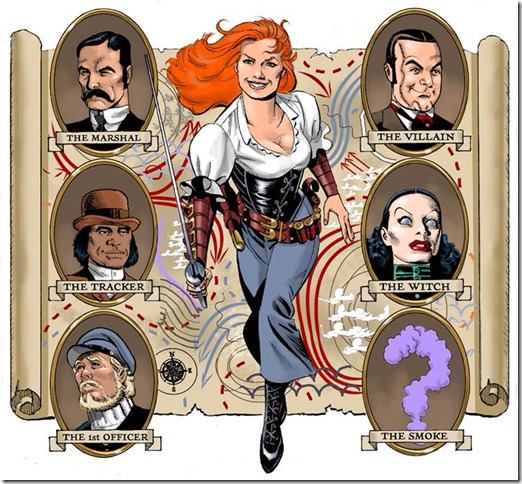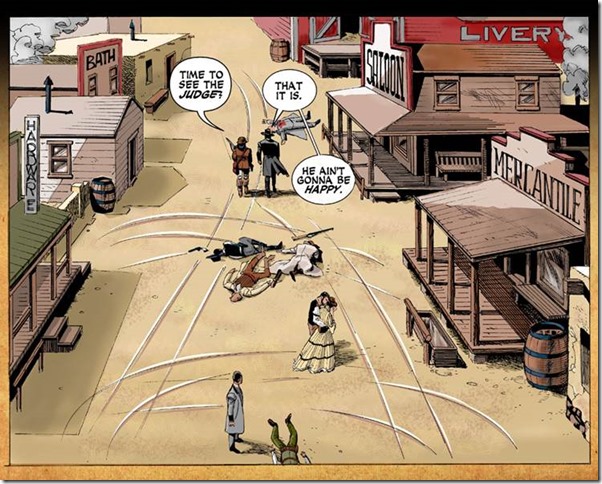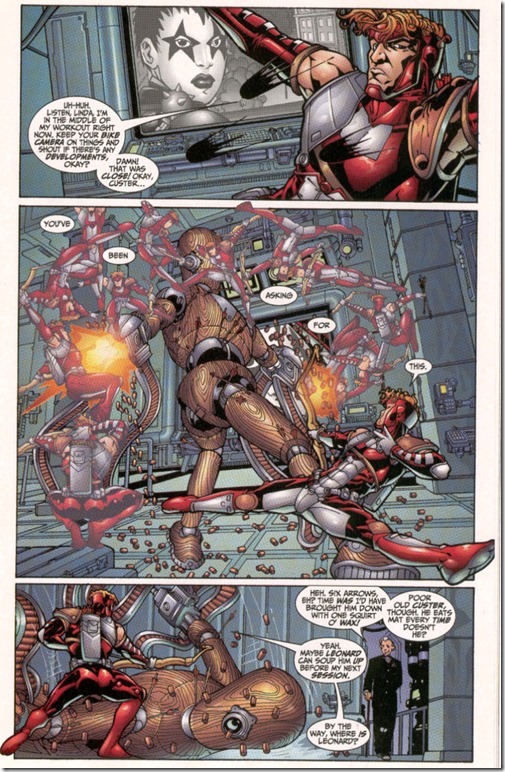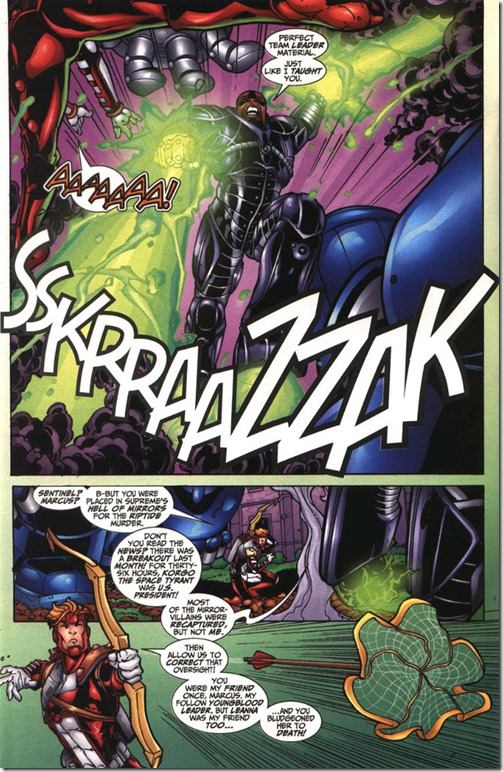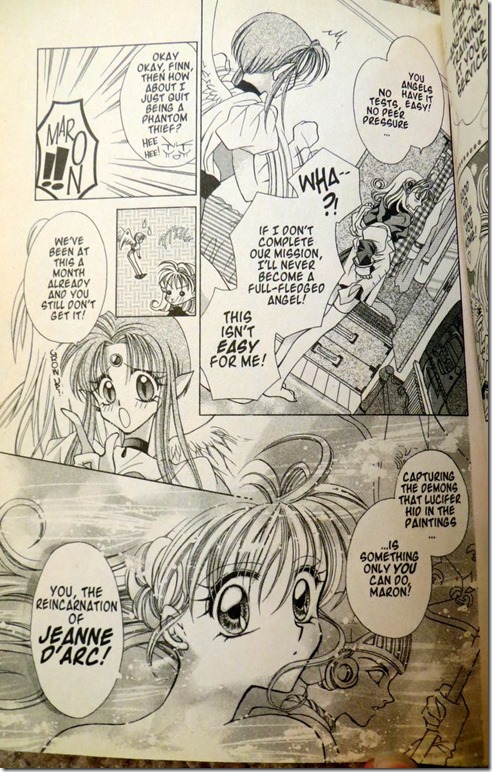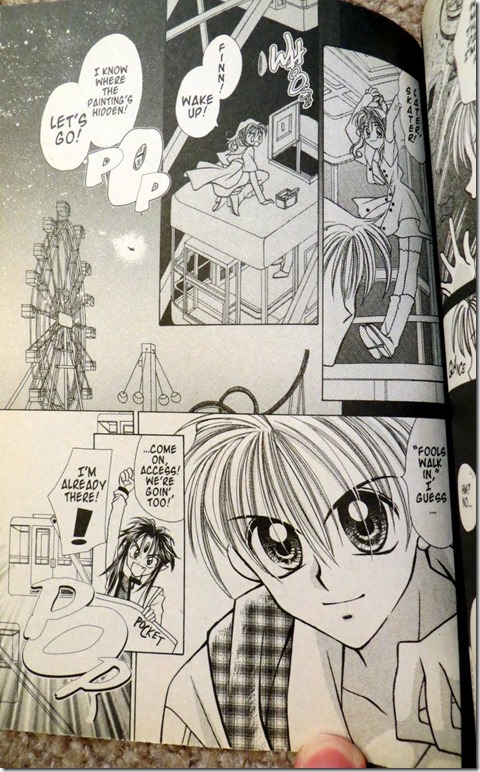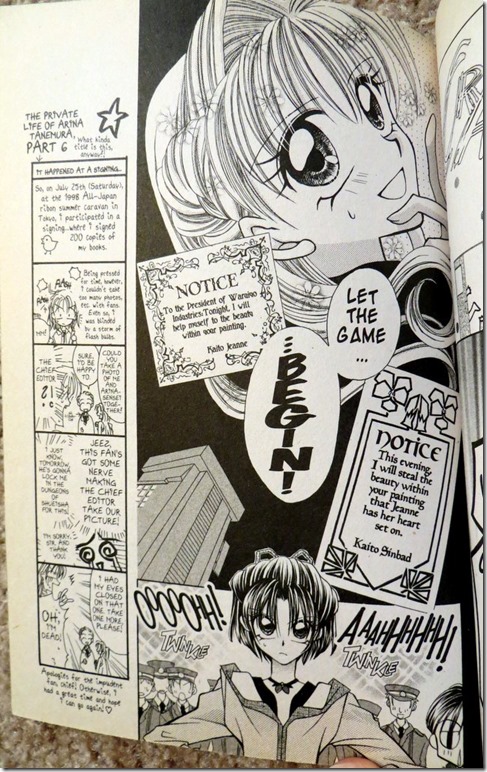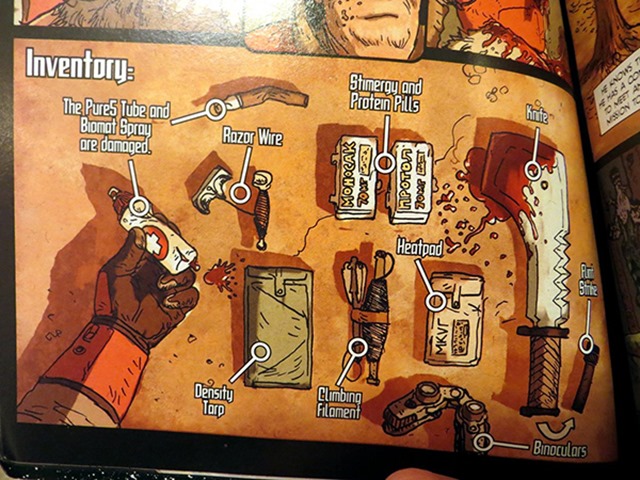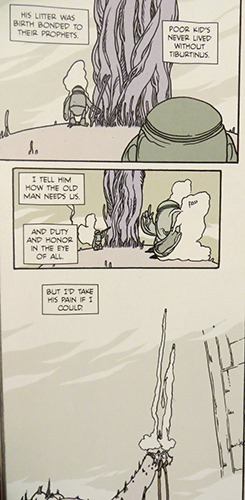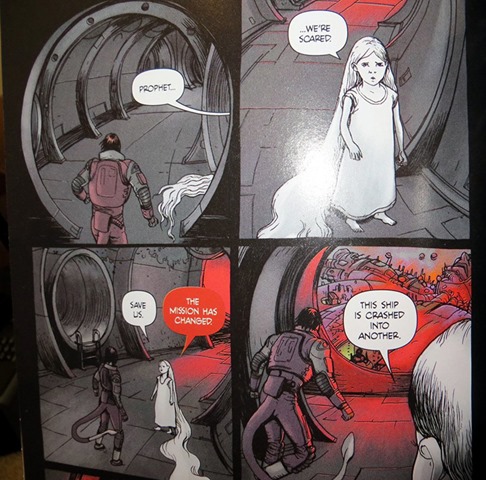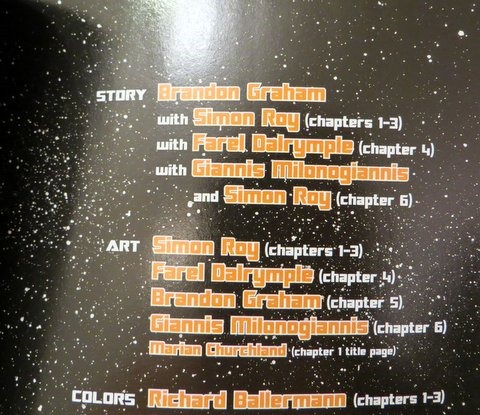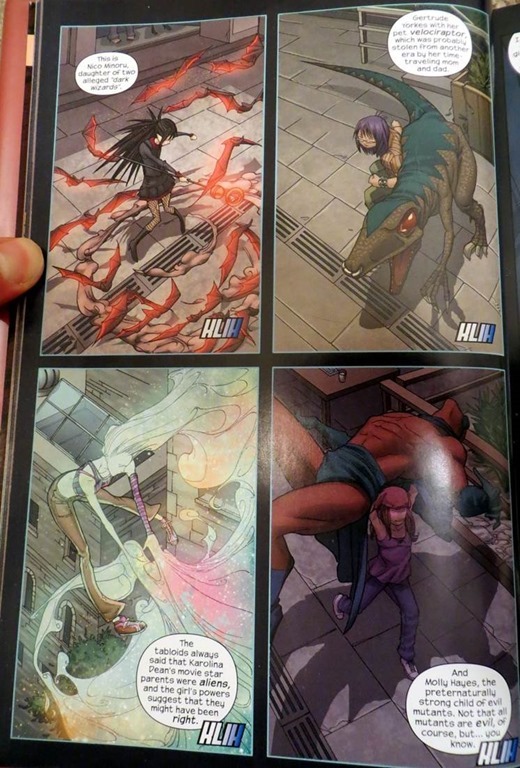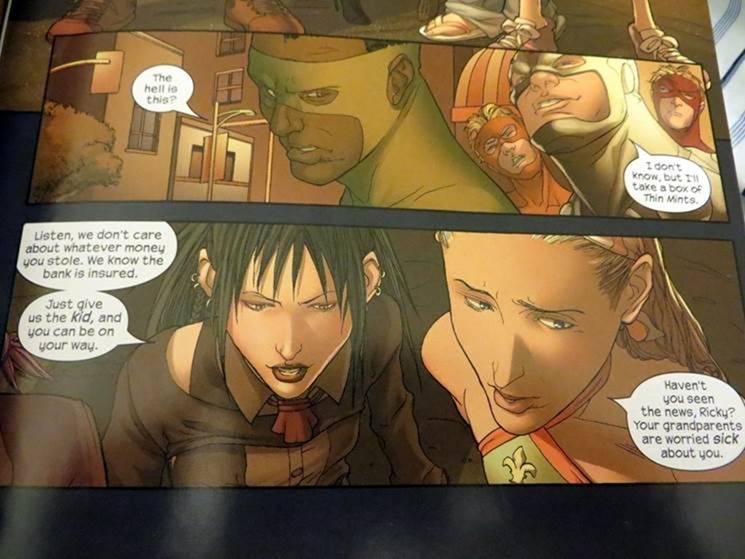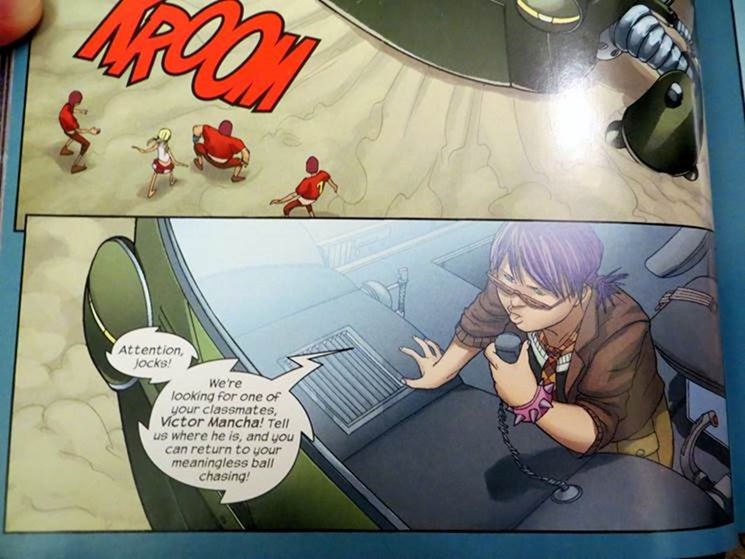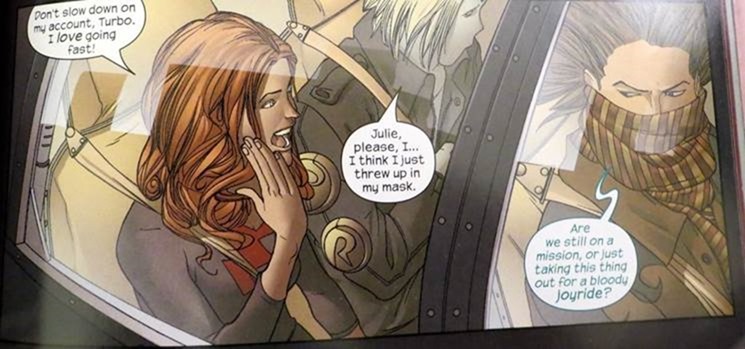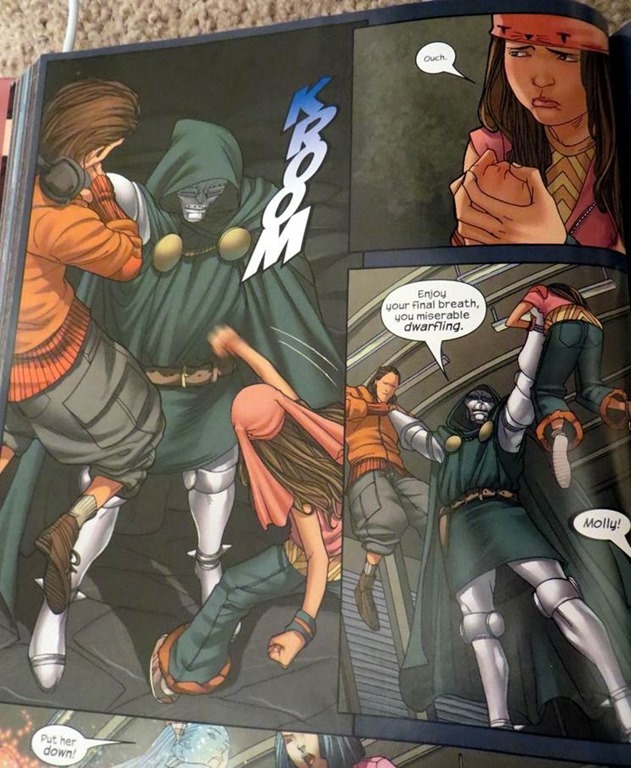TITLE: Mage: The Hero Discovered
STORYTELLER: Matt Wagner with colors by Jeremy Cox and James Rochelle
PUBLISHER: Image (originally published via a smaller company)
ISSUES READ: All four volumes
YEAR OF PUBLICATION: 1984- 1986
OBSERVATIONS ON WRITING:
1. This series starts out very strong, promising a more modern/ adult update of the 1940s classic comic, Captain Marvel, which is explicitly referenced. An ordinary man is given powers from a mysterious, benevolent wizard, and told to use these powers to save the world. But unlike that golden age classic character, the hero is an adult. It would be interesting to see how the superhero story can play out from a more adult point of view, with a character who has matured and grown up without superpowers, then suddenly finds himself in the middle of a more childlike battle where combatants are obviously evil or obviously good.
Unfortunately, after a very strong start, the book does little to nothing with this premise and Matt Wagner delivers a fairly standard superhero wrestling match.
OBSERVATIONS ON ART:
1. The character designs are terrific. These folks just don’t look like your typical superheros:
2. This is a visually innovative comic at times, but writer Matt Wagner too often falls into a problem where he has characters just standing around talking about the plot. A lot of scenes could stood to have been trimmed down.
It’s a shame, because Wagner is a talented artist with some interesting ideas, but during the weaker scenes the dialogue is kind of bad, and characters blather on about vague heroic nonsense: :
3. When Wagner takes a break from the boring dialogue and focuses on the art, he can deliver some really nice, Frank Miller-esque visual sequences. Just to highlight a few random bits: here’s a sequence where the hero is captured in a room that in my mind evokes abstract geometric art, with terrific compositional decisions:
And here’s a cool three page sequence where the realistic background sort of dissolves into abstraction:
This is some really great stuff, with a great concept, great art, and great character designs, but the writing overall is not doing it any great favors.
REVIEW GRADE: C+
REVIEW:
I would compare this book to Scott Mccloud’s “Zot!” Both books star a hero with a lightning bolt on his shirt, both look back to the more innocent golden age of comics, and both are by a creator who does both the writing and art. Zot! in my mind is the better book, because as the series progresses, Mccloud starts experimenting with the writing and stretching the superhero story to its limits.
Mage: The Hero Discovered never really does that. There are good guys and there are bad guys, and they wrestle in repeated battle until you hit the end of volume four and the villains suddenly lose for seemingly little reason other than the writer wants to move onto other projects. “BAM!!! POW!!!” it’s over.
Even as a standard, low expectations superhero book there are problems. The hero is invulnerable, and it rarely ever seems like he’s in any real danger. He also has no personal life or personal problems, perhaps leading to the feeling that the story ends up repetitive after it’s strong initial start.
WHAT DO OTHER CRITICS THINK:
This book overall seems to have been very well received. I suspect that this book was a lot more fun in 1984 than it is today, thought I can’t really back that up with internet discussion.
On Goodreads one reviewer certainly says it holds up, writing
This book really is one of my favorite things. I’m a big fan of Matt Wagner’s art and storytelling, of which this book stands to me as the first defining moment….
Going back to this and Starman in one summer has made me so very happy and excited and re-energized.
Another nostalgic visit to my comic book past. Still kinda fun, but nothing like the amazing story my memory made it out to be.
The dialog-free action scenes, which seemed so powerful at the time, still retain their zip, but the rest of this work doesn’t really hold up. The art is fine but the dialog really doesn’t work. Anytime the characters are talking through the plot, it’s okay. Whenever they try to talk the way people talk, it falls on its face.
Still this has a nice momentum to it and the urban fantasy elements are fun.
